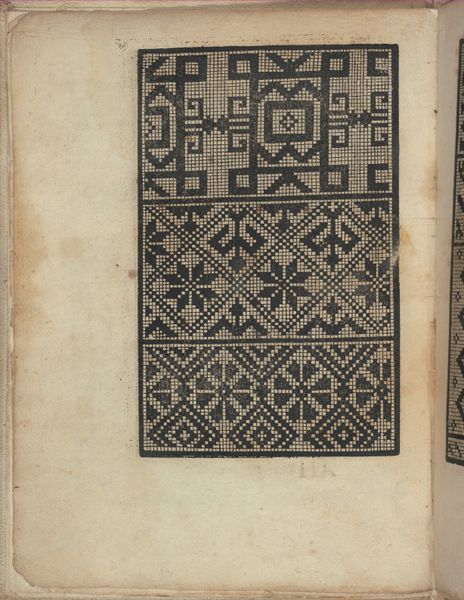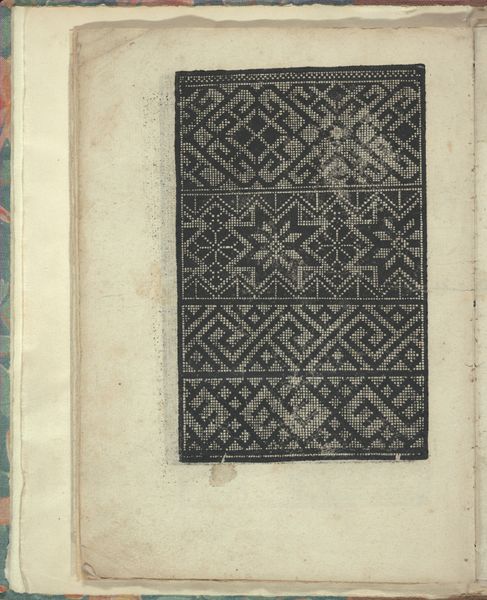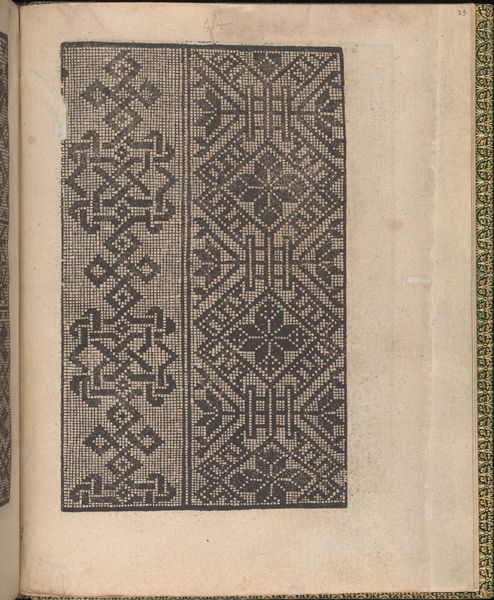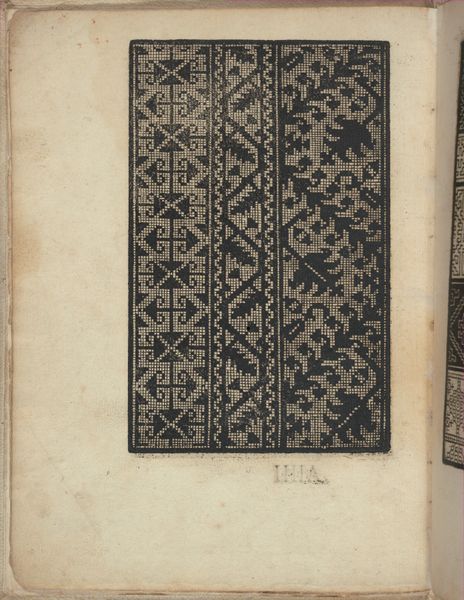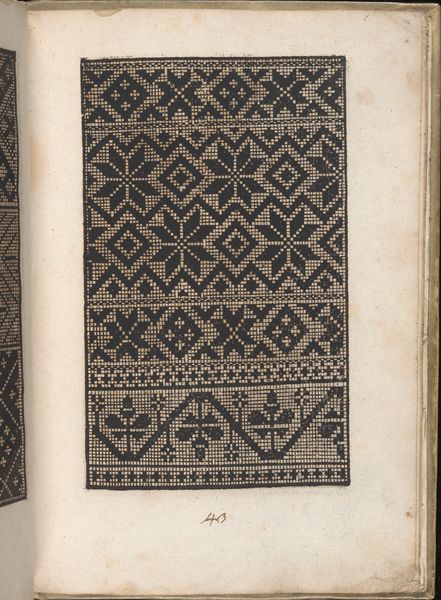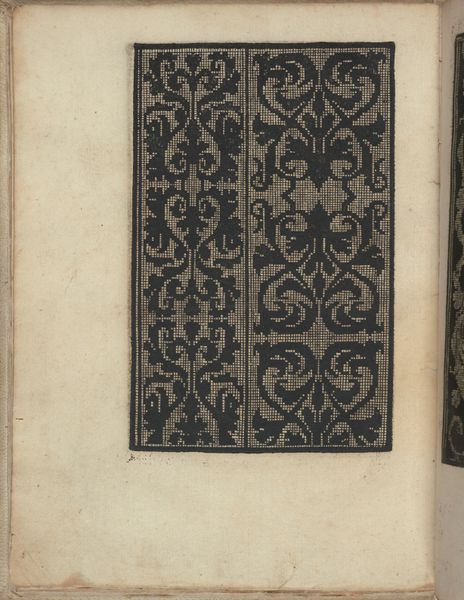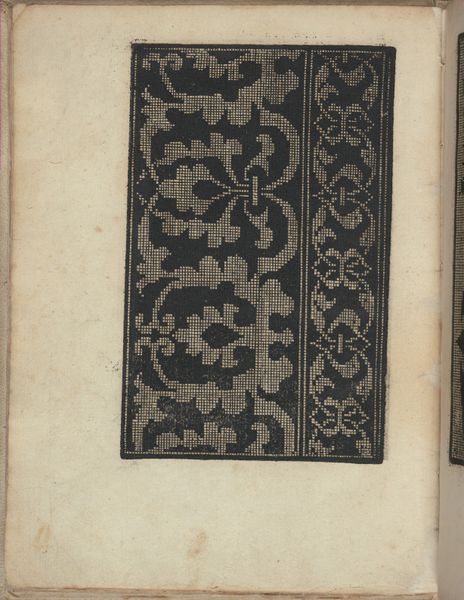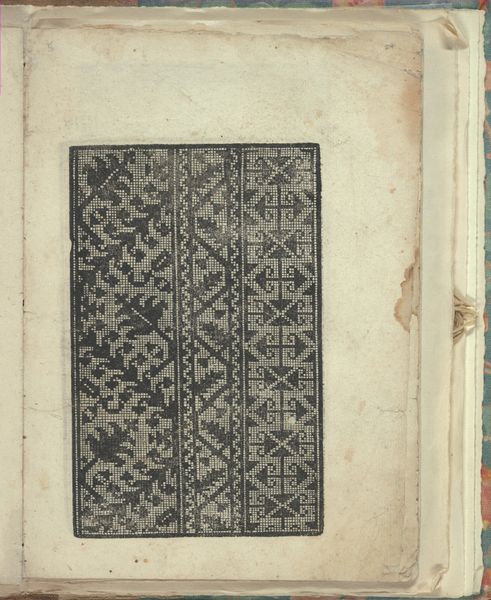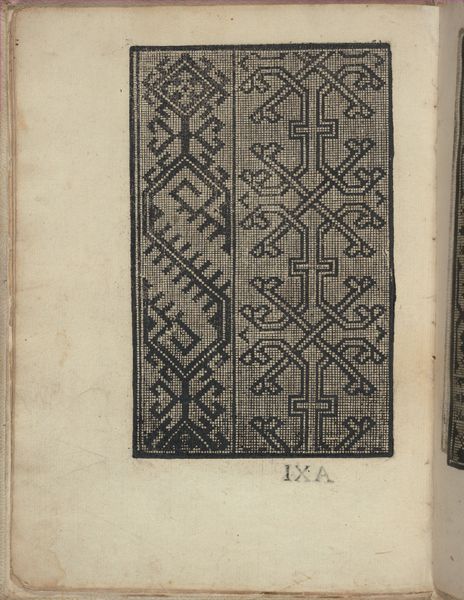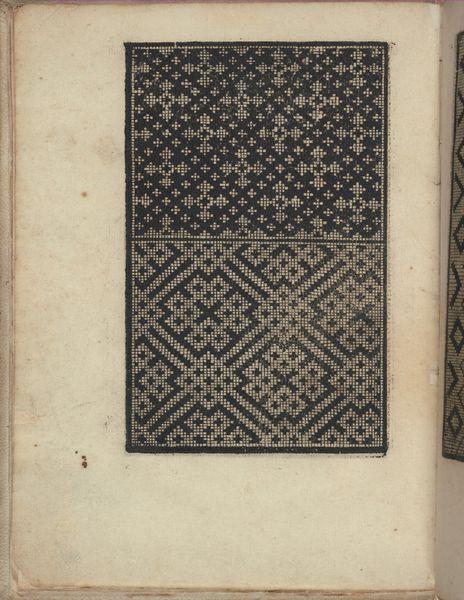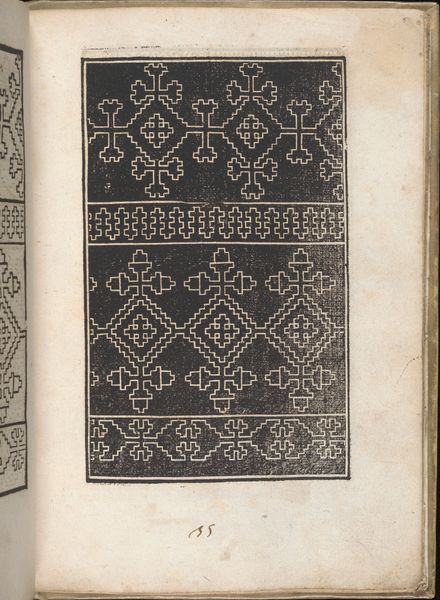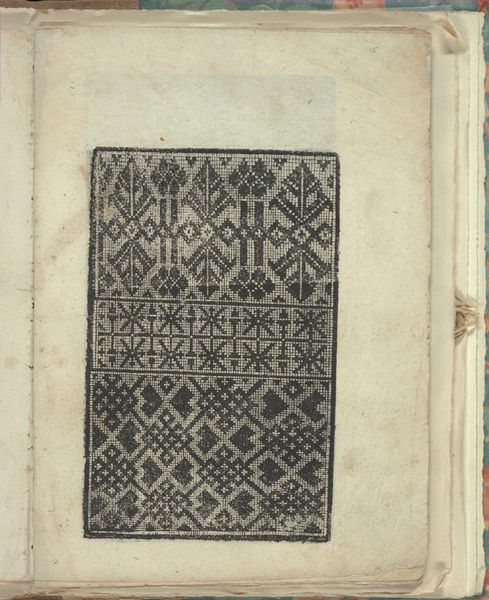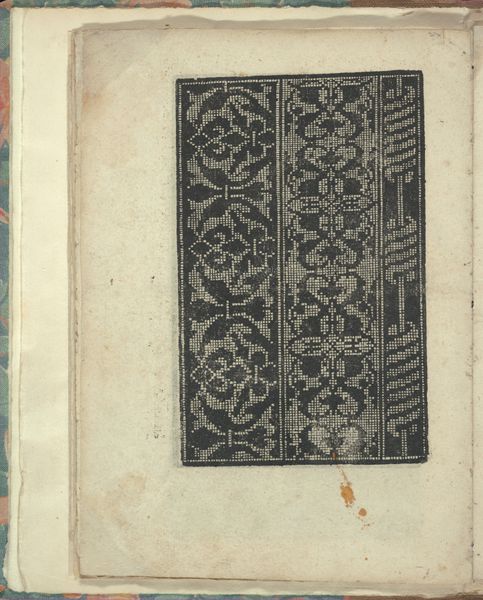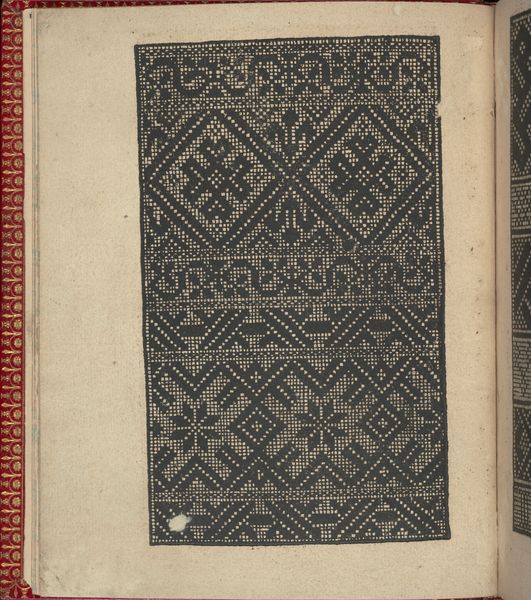
Esemplario di Lauori..., page 11 (verso) 1532
0:00
0:00
drawing, graphic-art, print, woodcut
#
drawing
#
graphic-art
#
ink paper printed
# print
#
book
#
11_renaissance
#
woodcut
Dimensions: Overall: 8 7/16 x 6 5/16 in. (21.5 x 16 cm)
Copyright: Public Domain
Curator: This is a page from "Esemplario di Lauori...", a book of embroidery patterns by Giovanni Andrea Vavassore, printed in 1532. Editor: Immediately, I see constraints and liberation at odds; so precise, geometric even, yet striving for a free, almost naturalistic floral pattern. The stark contrast creates a bold statement. Curator: Absolutely. It's a woodcut print, which allowed for relatively mass production and dissemination of these designs. It highlights the mechanics behind pattern books and how they impacted textile production. Editor: And how crucial these patterns were for women! Embroidery was an important skill, a creative outlet, but also, of course, a domestic labor expectation. We see ‘LIBERTA’ woven into the design, “liberty” – perhaps an ironic inclusion, or a quiet yearning threaded into the work? Curator: Interesting interpretation! The inclusion of “LIBERTA” does add another layer. Was it Vavassore, the publisher, suggesting creative license or personal freedom? Or, more practically, the freedom to interpret the pattern slightly differently? Editor: It challenges us to reconsider typical class distinctions within art, doesn't it? Was a mass produced pattern like this “low” art or a fundamental element of artistic creation in the Renaissance? And we must consider too who could afford these books, and whose labor executed their designs? Curator: Exactly. And how this type of print served as an essential tool within textile workshops. Its use reflects economic factors that influenced fashion, domestic decor and ultimately shaped culture and society through a series of repeatable mechanical processes. Editor: Looking at it through a feminist lens, we begin to recognize not only the patterns themselves but the complex socio-political framework of gendered expectations, the distribution of wealth, literacy, and aesthetic expression during this historical period. Curator: It’s remarkable how much information is contained within this seemingly simple design! From workshops and market economies to the women and other workers who relied upon such items. Editor: A perfect reminder that even something as seemingly decorative as an embroidery pattern can reveal larger power dynamics, creativity, and expressions of identity from centuries ago.
Comments
No comments
Be the first to comment and join the conversation on the ultimate creative platform.
